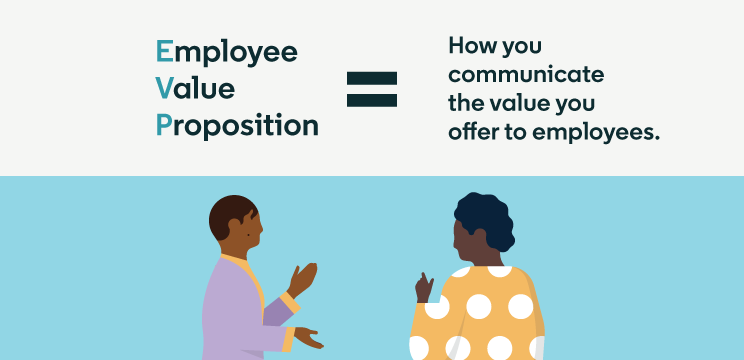
How to Use Your Employer Brand to Boost Nonprofit Recruitment
Nonprofit recruitment continues to be a major struggle for many organizations. The Center for Effective Philanthropy’s State of Nonprofits 2024 report found that 57% of surveyed nonprofit leaders cite staffing-related concerns as one of their organization’s biggest challenges. What’s more, fewer than half of these leaders reported a typical or lower-than-typical amount of employee turnover at their organization, suggesting that staff are leaving at higher levels than the norm.
Amidst these challenges, your organization’s employer brand can be one of your most valuable tools for not only attracting great talent, but ensuring strong alignment that supports retention. Here are three key steps to creating an employer brand that is effective, memorable, and genuine.
1. Define your employee value proposition as clearly as possible
Your employee value proposition (EVP) is the heart of your employer brand, encapsulating the value you offer employees who come to work at your nonprofit. By using your employer brand to highlight your EVP clearly and authentically, you can set your nonprofit apart from other employers when prospective candidates go looking for their next professional move.
As a nonprofit, you may not be able to offer as many perks as a for-profit employer could. That’s why the intangible benefits you can offer are arguably an even more important part of your EVP framing. These benefits can also make your nonprofit stand out in a way most for-profit jobs can’t.

For example, you could focus your EVP on the fact that every employee has the opportunity to make a real difference in the lives of others. Or, you could point to opportunities your employees have to work cross-functionally, empowering them to learn from other teams, try different projects, and build a diverse skill set that can support career development.
When aligning on your EVP, don’t just speak to leaders. Try to gain a holistic view by speaking to employees across the organization to understand where they find the most meaning and value in their jobs.
2. Shape your employer branding content around your EVP
Once you’ve aligned on your EVP, the next step is to embed it in all the employer branding content that you create and share.
Think about the core channels you’re going to use to promote your employer brand. Since many professionals use LinkedIn to look for career opportunities, start by reviewing your organization’s LinkedIn Page and looking for ways to weave your EVP into your “About” section. You can also use this space to add some information about your organizational culture. Rather than just talking about what your nonprofit does, seek to stir readers’ interest and create an emotional connection by sharing the core values your team aspires to and how they show up in your work.
Next, explore ways to build employer branding content into your regular posting schedule on LinkedIn. For instance, if an employee gave a great answer when you asked them why they love working at the organization, why not loop back to see if they’d be willing to be featured in a post? Employee spotlights and testimonials can be especially powerful for nonprofit recruitment because they:
Feel highly authentic
Show that your organization values its employees
- Give candidates a sense of the kind of people they could work alongside
These posts are also good for employee engagement. Team members may be excited to be featured and eager to share the post with their networks, helping to boost the visibility of your employer branding content.

If your organization has a LinkedIn Career Page, you can also feature your best employee testimonials here for maximum exposure. A Career Page is a dedicated tab on your LinkedIn Page that prospective candidates can visit to learn more about life at your organization — without leaving LinkedIn. So, if they spot a job post that interests them, they can easily click over to your Career Page to see if your organization is the right fit for them before hitting “Apply.”
You can also include a button that candidates can click to signal that they’re interested in working for your organization. This allows you to keep them in mind for future roles, even if you have no open roles right now.
3. Incorporate your employer brand into your job posts
When jobs do open up at your organization, keep your employer brand front and center when writing the job post. Remember, this post may be the first interaction a candidate has with your nonprofit. Think of it as an opportunity to earn their attention and encourage them to look deeper into your organization.
While every job post is different, here are some examples of ways to write a job post through an employer branding lens:
Overview of the organization: Include a line or two about your culture, core values, and team, as well as a succinct mission statement.
Key responsibilities: Don’t just list tasks the new hire will be responsible for — emphasize how their contributions will make a real impact.
- Benefits: Use your EVP to inform how you answer the question “What’s in it for me?”
The best nonprofit job posts tap into candidates’ sense of purpose and get them excited about the prospect of applying their skills to move your mission forward. That way, even if this specific role isn’t right for them, you can leave them with the sense that your organization might be.

